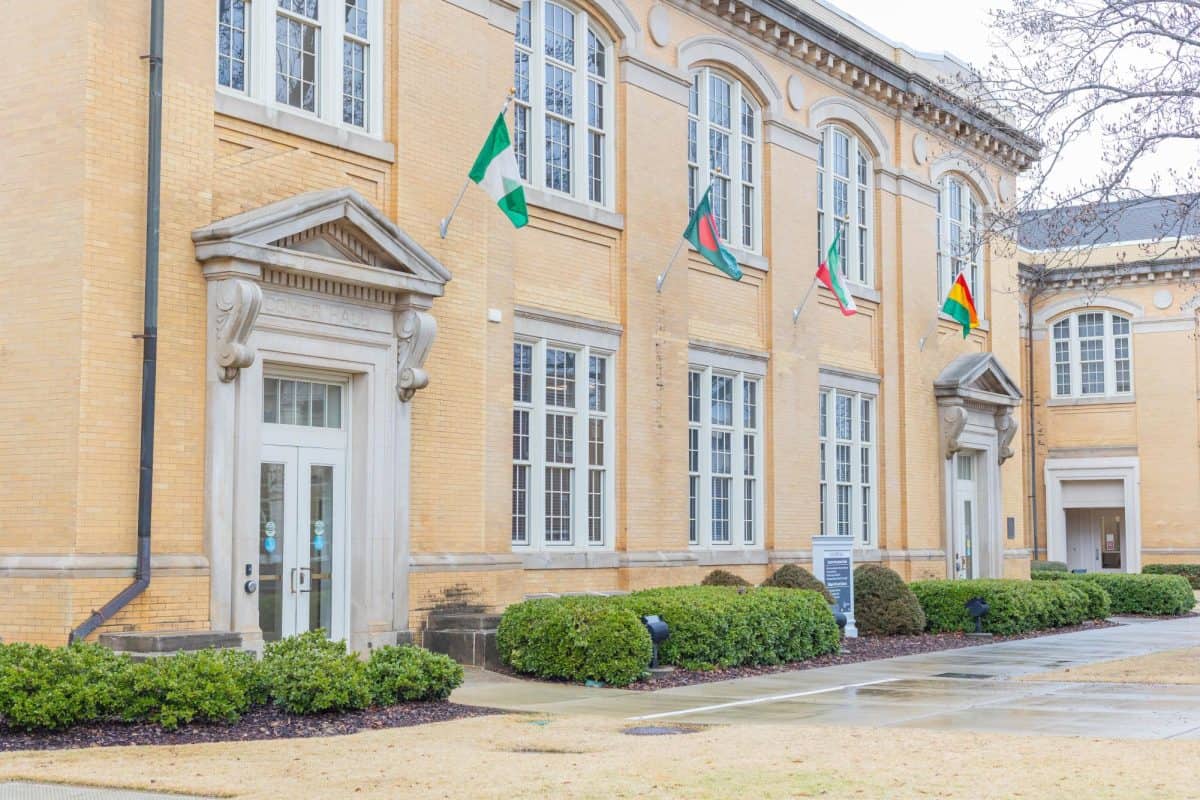Today marks the last edition of The Crimson White during the year of the 50th anniversary of Stand in the Schoolhouse Door. Fifty years ago, The University of Alabama accepted its first black students.
Now our sororities are following suit. Still, as this campus moves forward, it is important to look back.
On Aug. 17, 2013, the University hosted Bid Day for 16 Panhellenic sororities. Collegiate women gathered in Bryant-Denny Stadium and awaited the announcement that designated their future in the country’s largest greek system; however, at least two potential new sorority members were not offered a bid to any Panhellenic sorority during formal recruitment. Those two women were black.
Sorority members came forward, ready to tell of their experiences within their sorority houses during recruitment week. The stories varied, but they all had one idea in common: The aggressive interference came not from active student members, but rather from sorority chapter alumnae.
A source came forward identifying Chi Omega’s rush advisor Emily Jamison of having direct involvement in the removal of one of the black potential new members. Jamison was also employed by the University as director of UA, president’s and chancellor’s events.
On Wednesday, Sept. 11, nearly four weeks after rush, The Crimson White published “The Final Barrier,” which publicized the discrimination that occurred behind closed doors of sorority houses. The next day, Alabama Gov. Robert Bentley responded.
“I think it’s absurd that you don’t select the best person and that you would ever discriminate against anyone because of the color of their skin,” Bentley said. “So I feel the way the students do, and I believe that they should chose people on their qualities.”
Two days after publication of “The Final Barrier,” the UA administration issued its first statement. Before the meeting of the UA System Board of Trustees that day, a statement from President pro tempore Paul Bryant Jr. was issued to the media.
“The Board of Trustees does not support the segregation of any organization at our institutions on account of race,” Bryant said in the statement. “We support the efforts of our administration to effect the change necessary to bring this principle to reality in the entire University of Alabama System.”
UA President Judy Bonner reiterated the statement to the media following the meeting but did not answer any further questions.
Two days later, Bonner called a meeting with representatives from each Panhellenic sorority. The meeting was closed to the media; however, Director of Media Relations Cathy Andreen provided The Crimson White with a prepared statement from Bonner.
“As we have said, the University is working with our local chapters and national headquarters to remove barriers that prevent young women from making the choices they want to make,” the statement read. “Our meeting this evening with chapters advisors is another step forward in that process. We are unified in our goals and objectives to ensure access and choice to all students, and to doing the right thing the right way.”
The following Monday, Sept. 16, presidents and delegates of the Alabama Panhellenic Association announced that each sorority would be allotted an amended 360 members, which permitted sororities to reopen the bidding process.
A march was held exactly one week after “The Final Barrier,” calling for transparency from the administration. Bonner, as well as other members of the administration, met with the protesters.
On Friday, Sept. 20, Bonner released a video statement that confirmed the continuous open bidding process had been successful – minority women had been offered and accepted bids. By Oct. 16, Bonner confirmed in another video statement that Panhellenic sororities had issued a total of 200 bids to young women, 145 of which had been accepted. Of those students who accepted bids, 23 were minorities, including 14 black students.
During October, UA system employee Jamison retired with the University.
“Emily retired from UA last month for personal reasons,” Chris Bryant, assistant director of media relations and research communications director, said on Nov. 7. Bryant said he could not provide a specific date of Jamison’s departure.
These changes represent incredible steps forward. In just nine days, the University altered the face of the greek system. However, the process by which these changes were enacted was plagued by a resistance to them. Those who wish to enact change faced challenges at the institutional level of this campus, while those with influence refused to use it.
Sorority members who brought their concerns to greek and University leaders were not given a supportive response, and their complaints went largely uninvestigated. No action had been taken even weeks after the conclusion of rush. The University’s initial response to the issue came two days after “The Final Barrier,” more than three weeks after the conclusion of sorority recruitment and a day after the governor of Alabama issued his own statement.
The statements that were finally issued were riddled with ambiguous language and qualifications, seemingly more concerned with limiting liability rather than encouraging change.
On Nov. 22, The Crimson White was granted a meeting with Bonner. When asked for specifics on the University’s plan for long-term change in the sorority community, Bonner responded, “I don’t have details I’m willing to discuss at this point.”
This resistance is indicative of a larger culture that is comfortable with preserving the status quo, moving forward only when crisis demands it. Our culture is uncomfortable with change, unless it is forced upon it. When faced with a clear injustice, sorority member Melanie Gotz was forced to ask, “Are we really not going to talk about the black girl?” And tragically, this question was met with silence. Her sisters were unwilling to face the reality of challenging the norm.
During the 1960s, Alabama was forced to move forward only after outside pressure created a crisis within the state. Like the University, progress was achieved only as a result of external force and damage control. Unfortunately, we have not moved on from the past and still do not accept progress without being forced to do so. We remain locked in a culture that is content with the tradition and are terrified of inheriting liability. And sadly, this mentality represents a microcosm of this state.
The University has seen significant change over the past semester. We are taking steps toward equality and opportunity for all; however, that does not address the fact that it took nearly 50 years to do so. The conversations occurring today should have been had decades ago. They are the solution.
As the 50th anniversary of Stand in the Schoolhouse Door comes to a close, we must continue these conversations. We cannot progress, both as a university and as a state, without open dialogue about our challenges. If we turn toward silence, we cannot move forward.
Our View is the consensus of The Crimson White Editorial Board.








